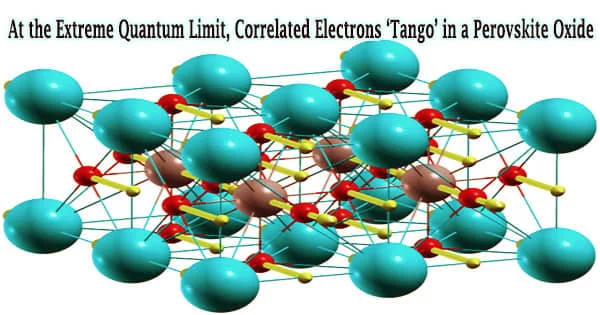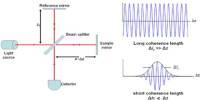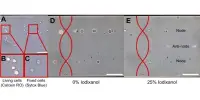A team lead by Oak Ridge National Laboratory of the Department of Energy has discovered a unique quantum substance in which electrons move in coordinated ways, basically “dancing.”
Straining the material results in an electronic band structure, which allows for exotic, more tightly linked behavior akin to tangoing among Dirac electrons, which are very mobile electric charge carriers that could one day enable quicker transistors. The findings have been reported in Science Advances.
Understanding the consequences of electrical correlations in quantum systems is one of physics’ most difficult topics, partially because of its importance in modern high technology. However, there are few works on the subject that attempt to provide a thorough overview of the discipline, which includes insulators, semiconductors, and metals.
“We combined correlation and topology in one system,” said co-principal investigator Jong Mok Ok, who conceived the study with principal investigator Ho Nyung Lee of ORNL. Topology probes properties that are preserved even when a geometric object undergoes deformation, such as when it is stretched or squeezed.
“The research could prove indispensable for future information and computing technologies,” added Ok, a former ORNL postdoctoral fellow.
Electrons move predictably in typical materials (for example, lethargically in insulators or energetically in metals). Physical factors cause electrons in quantum materials where they interact strongly to react in unanticipated but connected ways; one electron’s movement causes surrounding electrons to respond.
Ok led the creation of an extraordinarily stable crystalline thin film of a transition metal oxide to examine this tight dance in topological quantum materials. He and his colleagues used pulsed-laser epitaxy to create the film, which they then strained to compress the layers and stable a phase that does not exist in the bulk crystal. This phase was the first to be stabilized by scientists.
Co-principal investigator Narayan Mohanta, a former ORNL postdoctoral fellow, predicted the band structure of the strained material using theory-based simulations.
“In the strained environment, the compound that we investigated, strontium niobate, a perovskite oxide, changes its structure, creating a special symmetry with a new electron band structure,” Mohanta said.
Our goal is to understand what will happen when electrons enter the extreme quantum limit, where we find phenomena we still don’t understand. This is a mysterious area.
Ho Nyung Lee
If different states of a quantum mechanical system have the same energy value when measured, they are called “degenerate.” Each degenerate state has an equal chance of being filled with electrons. The particular symmetry in this case results in four states in a single energy level.
“Because of the special symmetry, the degeneracy is protected,” Mohanta said. “The Dirac electron dispersion that we found here is new in a material.” He performed calculations with Satoshi Okamoto, who developed a model for discovering how crystal symmetry influences band structure.
“Think of a quantum material under a magnetic field as a 10-story building with residents on each floor,” Ok posited. “Each floor is a defined, quantized energy level. Increasing the field strength is akin to pulling a fire alarm that drives all the residents down to the ground floor to meet at a safe place. In reality, it drives all the Dirac electrons to a ground energy level called the extreme quantum limit.”
Lee added, “Confined here, the electrons crowd together. Their interactions increase dramatically, and their behavior becomes interconnected and complicated.”
This coupled electron activity, which differs from that of a single particle, sets the foundation for unanticipated behavior like electron entanglement. Multiple things behave as one in entanglement, which Einstein dubbed “spooky action at a distance.” Quantum computing cannot be realized without it.
“Our goal is to understand what will happen when electrons enter the extreme quantum limit, where we find phenomena we still don’t understand,” Lee said. “This is a mysterious area.”
Graphene, topological insulators, and certain unconventional superconductors all benefit from fast Dirac electrons. ORNL’s one-of-a-kind substance is a Dirac semimetal, in which the electron valence and conduction bands cross, resulting in unexpected behavior. The significant electron correlations of the Dirac semimetal were measured by Ok.
“We found the highest electron mobility in oxide-based systems,” Ok said. “This is the first oxide-based Dirac material reaching the extreme quantum limit.”
This is encouraging news for sophisticated electronics. According to theory, electrons in ordinary semiconductors should hit the extreme quantum limit in roughly 100,000 tesla (a unit of magnetic measurement).
To see what it would take to push electrons to the extreme quantum limit, the researchers took their strain-engineered topological quantum material to Eun Sang Choi of the National High Magnetic Field Laboratory at the University of Florida. He studied quantum oscillations there and discovered that the material only needed 3 tesla to produce this.
Other specialized facilities allowed the scientists to corroborate Mohanta’s predictions in the lab. The experiments were carried out at low temperatures to allow electrons to roam about freely without being disrupted by atomic-lattice vibrations. The Pittsburgh Quantum Institute and Jeremy Levy’s group at the University of Pittsburgh confirmed quantum transport properties.
Hua Zhou at Argonne National Laboratory’s Advanced Photon Source, a DOE Office of Science user facility, demonstrated that the material’s crystallographic structure stabilized in the thin-film phase, yielding the unique Dirac band structure, using synchrotron x-ray diffraction.
ORNL researchers Sangmoon Yoon and Andrew Lupini used scanning transmission electron microscopy to show that epitaxially produced thin films exhibited sharp interfaces between layers and that the transport behaviors were fundamental to strained strontium niobate.
“Until now, we could not fully explore the physics of the extreme quantum limit due to the difficulties in pushing all electrons to one energy level to see what would happen,” Lee said.
“Now, we can push all the electrons to this extreme quantum limit by applying only a few teslas of a magnetic field in a lab, accelerating our understanding of quantum entanglement.”
















